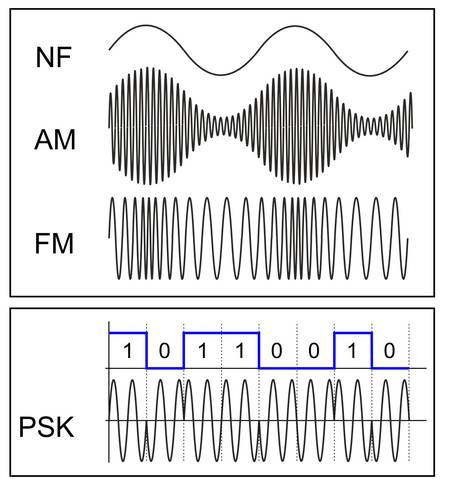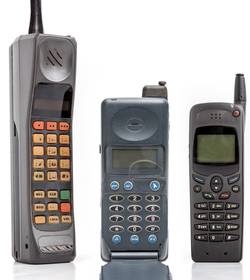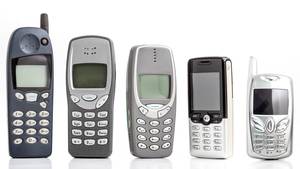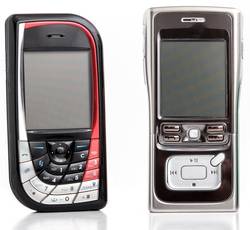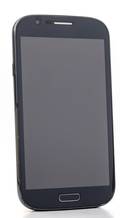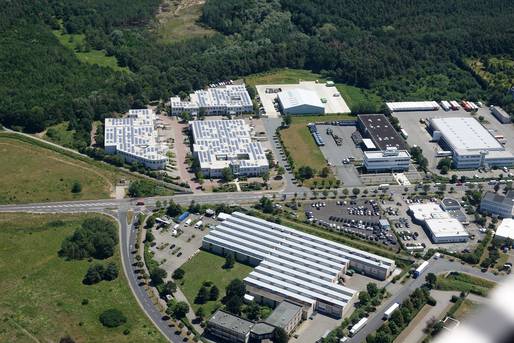5G Mobile Communications Standard & 5G network simply explained
This text is machine translated.
Since the introduction of the fifth-generation mobile communications standard (5G), mobile providers and network operators A1, Drei and Magenta have been stepping up their advertising efforts. They are showing us a fascinating new digital world that is available to us anytime and anywhere thanks to super-fast 5G.
The days when cell phone owners had to contend with massive network problems are definitely over. According to the advertising claims of network operators, the new technology provides seemingly limitless possibilities for mobile Internet access in real time. This makes it possible for millions of people to stream films or live events simultaneously and without delay.
Mobile gaming and augmented reality will enter a completely new dimension in the coming years. The real world and virtual elements will merge seamlessly and fluently. Virtual reality will also fundamentally change and completely redefine the way we learn.
We tell you what else is behind the 5G mobile communications standard and what the new mobile communications standard can do and will be able to do in the next few years.
In order to transmit signals such as voice, music or data over long distances, a transport medium is required. In mobile communication, high-frequency (HF) oscillations are used as the carrier frequency.
These are then transmitted from antenna to antenna through the air. Experts speak of modulation when a useful signal with low frequencies (LF), such as speech or music, is combined with a high-frequency carrier frequency.
The most common types of modulation in analog radio and television transmission are amplitude modulation (AM) and frequency modulation (FM). In mobile radio, on the other hand, digital information is transmitted with zeros and ones.
This is why phase modulation (PSK for phase shift keying) is used here. If the wave of the carrier frequency oscillates upwards, a “one” is transmitted.
If the wave oscillates downwards, a “zero” is transmitted.
The carrier frequency operates in a certain frequency spectrum, which is defined by the lower and upper cut-off frequency. This range is also referred to as the bandwidth. The higher the bandwidth, the more information can be transmitted.
On the receiver side, the low-frequency useful signal or data information is recovered by demodulation. However, this is only possible if the receiver and the transmitter are precisely tuned to each other and use the same frequencies and the same transmission method.
The mobile communications standard precisely defines the structure of the radio signals and the data transmission process worldwide. Smartphone manufacturers thus have concrete planning documents and smartphone users can later use their devices worldwide.
The development of mobile communications standards has always had something to do with the development of user behavior. In other words, mobile communications standards have always tried to meet the constantly growing demand for data volume and speed. While the first generation of mobile communications standards focused on mobile telephony, the demands of users and the performance of modern smartphones have shifted significantly. Just how quickly and how enormous the changes have been can be seen from the development of the various mobile phone standards.
Mobile radio standard 1G
The standard of the first generation of mobile communications (1G) worked in 1958 with analog voice transmission via the so-called A network.
Calls still had to be switched manually by the “lady from the office”.
There were radio transmitters with fixed transmission ranges that you were not allowed to leave, otherwise the call would be interrupted. The devices, some of which were quite unwieldy, were also really expensive.
This was followed in 1972 by the B network as the first self-dialling network in mobile telephony and in 1984 by the C network, which was based on radio cells.
Over the years, the phones also became much smaller and became real cell phones.
Mobile radio standard 2G
The second generation of the mobile network was introduced in 1992 under the name “Global System for Mobile Communication” or GSM network. The switch to digital technology made it possible to transmit data such as text messages via mobile communications in addition to voice in the D network and later in the E network. Digitization also significantly improved voice quality and allowed many more people to make calls or transmit data at the same time. Two frequency bands were used in the GSM network.
GSM 900 uses the frequencies 890 - 915 MHz and 935 - 960 MHz.
GSM 1800 (formerly Personal Communications Network 1800) uses the frequencies 1,710 - 1,785 MHz and 1,805 - 1,880 MHz.
Thanks to efficient modulation methods (GPRS technology), data rates of up to 150 kbit/s were possible.
Mobile radio standard 3G
The introduction of the third-generation mobile communications standard or “Universal Mobile Telecommunications System (UMTS)” took place in Germany in 2004.
This standard created the basis for the mobile and fast transmission of large amounts of data.
Mobile surfing on the Internet or playing and distributing music and videos became easily possible with this standard.
UMTS uses the frequencies 1,920 - 1,980 MHz and 2,110 - 2,170 MHz.
Technical enhancements such as HSPA+ (High Speed Packet Access) have made transmission rates of up to 42 Mbit/s possible.
Mobile radio standard 4G
The LTE (Long Term Evolution) mobile communications standard was developed to cope with the constant growth in data transmission volumes over the years.
However, the aim was not just to increase transmission rates.
Rather, the aim was to develop a uniform global standard, which was then launched in Stockholm in 2009. LTE was also introduced in Germany in May 2010.
LTE uses the 800 MHz, 1,800 MHz and 2,600 MHz frequencies. Since June 2015, additional frequencies in the 700 MHz range have also been added, which were previously used by digital television (DVB-T). Data transmission rates of up to 300 Mbit/s are possible thanks to innovative multi-antenna technology, better division of the radio cells and a reduction in delays (latency). By bundling frequency bands (LTE-Advanced Pro), a theoretical speed of up to 500 Mbit/s is possible.
Mobile radio standard 5G
While the LTE expansion was still in full swing, the LTE successor 5G or the standard for the fifth generation of mobile communications was already being developed.
The introduction of 5G did not mean the end of LTE or 4G. Rather, 5G is the extension of LTE.
This is because the data volumes and transmission speeds required in the future can only be achieved by operating LTE and 5G in parallel.
Ultimately, communication in the future will not only take place between millions of people. Machines and devices will also become much more networked in the Internet of Things (IoT) and constantly exchange information with each other. Complex industrial automation (Industry 4.0) or autonomous driving will only be possible with a reliable connection with extremely high data volumes and short delay times.
The 5G mobile communications standard will be introduced in Austria in the 3400 MHz band and the 700 MHz band:
5G-compatible smartphones
Which frequencies does the 5G network use?
As the fifth generation of mobile communications, the 5G mobile communications standard uses the available frequency ranges of 700 megahertz (shared with LTE), 2.1 gigahertz and 3.6 gigahertz for data transmission in Germany.
Transmission in 5G mobile communications in Germany takes place in three main areas:
700 MHz
The original plan was to use these LTE frequencies to transmit LTE to rural regions. Thanks to intelligent Dynamic Spectrum Sharing (DSS), 4G and 5G can now share the frequency band, with LTE serving as the anchor frequency and connecting link. This means that no costly conversion work is required on the transmission masts. Only a software update is required for the conversion.
2.100 MHz (2,1 GHz)
In addition to the 3.6 GHz band, free capacity in the 2 GHz (gigahertz) range was also auctioned off at the 2019 frequency auction. When the dismantling of the UMTS network is completed at the end of 2020, the UTMS frequencies that have become available will also be available for 5G.
3.600 MHz (3,6 GHz)
The 3.6 GHz frequency band was one of the most sought-after frequency bands for 5G expansion when it was auctioned off by the Federal Network Agency. Although the range in this frequency range is rather small, very large amounts of data can be transmitted. This makes this frequency range ideal for cities.
In the range from 700 MHz to 3.6 GHz, a wide variety of mobile communications standards from 2G to 5G are operating in a jumble. Even if 3G is phased out in Germany, the available space is simply too small for the future. Especially as more and more users have to share the available space. As a result, the data transmission that is actually possible is becoming slower and slower. This is particularly evident in areas such as stadiums or shopping centers, where there are a large number of users with their smartphones in a limited space. The performance limits of the network provider are then reached very quickly.
This is why mobile network providers have been forced to use ever higher frequency ranges in the past.
LTE, for example, uses higher frequencies than 3G. And with 5G, the usable frequencies were also shifted further upwards. In order to achieve the necessary bandwidths for the immense data volumes of the future, network operators such as Deutsche Telekom are flirting with millimeter waves (mmWave). In other words, the frequency range from 24 to 100 GHz. This would enable gigantic data rates of up to 20 Gbit/s or more for millions of people and end devices.
However, the physical properties of these waves initially speak against their practical use. This is because the higher the frequency, the lower the range performance. In addition, penetration of walls or buildings is very poor or even impossible in this frequency range. As the waves are easily shadowed, a connection is only possible on sight, so to speak.
However, if many small intelligent radio cells (smart cells) are used at different mobile radio locations instead of a large radio mast, the problems can be easily solved. Similar to WLAN routers, the devices could then be mounted inside buildings or outside on lanterns.
Other innovative concepts such as beamforming (influencing the radiation characteristics) and MIMO techniques (using several transmitting and receiving antennas in one transmission system) also help to reduce the disadvantages of mmWave. Another advantage: as the smart cells are always in the immediate vicinity of the user, the phone's transmission power and therefore power consumption are reduced.
Planning for the release of millimeter waves
At the moment, however, mmWave technology is not yet an issue for mobile communications in Germany. This is because a decision on the allocation of frequencies by the Federal Network Agency is still pending. In addition, the radio cell transmitters must be connected via fiber optic cable in order to enable fast data transmission, e.g. from the Internet. However, it is only a matter of time before mmWave technology is also introduced here.
As already mentioned, a wide variety of frequency ranges are available for the 5G mobile communications standard. Which frequencies are used where ultimately depends on user expectations.
These are just a few examples from the wide range of applications. Depending on the requirements, the frequency ranges used can vary or even be combined.
Even if the rosy times that advertising is already promising us are not quite so rosy at the moment, there is still a lot of potential in the 5G mobile communications standard. This is why all mobile network providers are working flat out to equip their networks with the new technology. In particular, the relatively simple conversion of the 700 MHz LTE systems has helped to quickly enable large-scale coverage and basic coverage with 5G. The current development is definitely exciting and will remain exciting in the future due to the introduction of millimeter wave technology.

